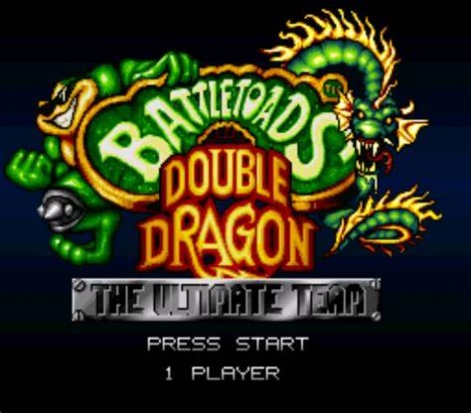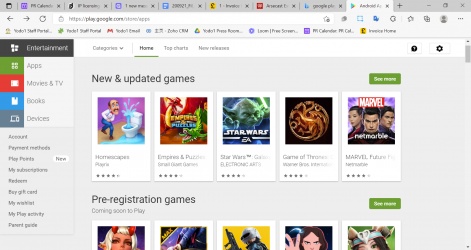The collaboration between intellectual property (IP) holders and game developers to integrate top brands into existing games or make brand new ones has been around for a long time.
In the early 90s, Battletoads/Double Dragon was an early example of the power of brand injections into games and the success it can bring.
It had great reviews at the time and retrospectively won the best overall game at the 1993 Nintendo Power Awards.
Since then gaming has obviously moved on and the advent of the mobile phone has made this segment of the gaming industry a fast-growing and exciting area, enabling both IP holders and game developers to grow their audience and revenues, a true win-win.

Brands being integrated into games range from iconic characters in movies, TV shows and anime to fashion, sports teams and players or musical artists and influencers. These types of integrations facilitate increased engagement with the brands from players who are able to enjoy fresh and exciting content using the brands they love in the games they play.
Yodo1 is a company leading the charge in this field of gaming, exemplified by its partnership with Hasbro.
By licensing Hasbro’s world-class IPs such as Transformers, Yodo1 has been able to help its partner studios to amplify, enhance or create new games in cooperation with these IPs. An excellent example of this is the Mobile Legends x TRANSFORMERS collaboration that ran in August 2021.
How games and IP holders benefit from brand injections
Brand injections offer both the IP holders and the game developers great opportunities and benefits:
The IP holder can:
- Expand their brand’s exposure by reaching new audiences in the most engaging format of entertainment.
- Generate a new or an additional revenue stream for their brand.
- Provide another marketing channel for the brand overall.
- Reclaim lapsed brand audiences/fans by offering them something new and exciting.
The game developer can:
- Reach new and wider audiences as a result of the popularity of the IP holder’s brand.
- Grow their revenue stream as a result of more engagement and monetisation in their game from a bigger audience.
- Keep the game fresh and exciting by using branded campaigns to highlight new features within the game, thus retaining players.
A recent collaboration by Yodo1, Hasbro’s Transformers and the strategy game Top War highlights the realisation of these benefits and opportunities. The two-week in-game event that took place in August 2021 saw the Transformers IP injected into the game.
Over 13 million players globally participated in this event, which saw 50 per cent of daily revenue for the game come from Transformers related sales.
How Big is the Brand and What is its Potential
To ensure the right brand is selected for the right game and genre a developer must research the IP to reach the full potential. In all areas of consumerism, the stronger the IP or brand’s connection is to its audience, the stronger is its ability to provide a return on investment (ROI). This is because an excellent IP drives awareness and creates an instant emotional attachment with the audience.
For mobile gaming, this is exemplified by Apple’s IOS and Google’s Play stores regularly featuring IP-based titles in their prime merchandise banners, and people often searching for the IP itself.

Three out of five titles on Google Play’s top section (on the Game’s category, 20th Sep 2021) are strong IP branded games
This is great when marketing the title as consumers instantly recognise the brand and form an association with the game, as well as having the chance to participate in the storylines and lore that the IP already offers. All of this can significantly reduce customer acquisition costs and drive long-term engagement in the game.
Therefore a developer, must thoroughly research the brand and identify:
- How popular is it within its local market as well as globally?
- How strong is the brand within gaming?
- How long has the IP existed and when was it most popular?
- Which demographic does the IP most appeal to?
- Are there any events, content and/or new non-game products that are to be released in relation to the IP?
- What is the IP holder’s track record of managing IPs (how many of their brands are held in high esteem)?
Matching the Brand With the Right Game Genre
In theory these collaborations sound quite straightforward, but they can quickly go awry if the brand does not match the game. For example a zombie game almost certainly wouldn’t work with an IP such as the Teletubbies (and the IP holder probably wouldn’t permit it).
When selecting an IP, a developer would need to consider the game’s theme, its audience and how the IP can be aligned with those elements as well as the game’s mechanics. For example some hypercasual games which have short life cycles may not work well with IP injections because they rely more on ad monetisation rather than in-app purchases, which is a more common and effective way to capitalise on the brand injection.
On the other hand, The My Little Pony IP has proven to be an excellent example of a brand injection for the sandbox game Mini World. Through Yodo1’s Hasbro partnership, developer Miniwan Technology injected the brand into the game and saw excellent results.
There was a boost in sales with 180,000 skins of Twilight Sparkle and Princess Celestia sold within the first week and exceptionally high engagement over the two weeks from launch, with 10 million views and 750,000 comments on My Little Pony topics in online communities.
The Brand Should Enhance the Game
Once the appropriate brand is selected, a developer will also need to consider how the IP can showcase the game, drive engagement and bring joy to fans through its gameplay. If they don’t, they won’t win over the audience.
For example, the Tom and Jerry game created by NetEase was designed to be fun and quirky, much like the characters, as the IP caters to a casual audience. It wouldn't have made sense to implement hardcore game mechanics, as that would only have put off the show's biggest fans.
An alternative example would be an RPG like Marvel Future Fight (by NetMarble). Role-playing games (RPG) often centre around character growth, specialised weapons, and rich backstories Therefore an IP such as this would enhance the player’s gaming experience as it features well-loved heroes and notorious villains whose personal histories and characteristics can be immersed into the game to enhance the plot.
With IP holders keen on opportunities to collaborate, large game publishers and developers who take the above advice into account can easily find the right IP to give their titles even more traction.
Over the years, third-party IP licensing has yielded notable results, which are growing rapidly in the mobile game market. So if large publishers and developers can find the right IP to best fit their game's characteristics, approach IP rights holders, and integrate the brand into their game (theme, products, and gameplay mechanisms) they may be on a win-win path.
So whether you are a developer or an IP holder looking to take advantage of IP licensing, contact Yodo1 to get started.
Through their Brands in Games team (BiG), years of experience, and expertise, they are able to help acquire the right IP for the right game, helping you on the path to a true win-win.






















